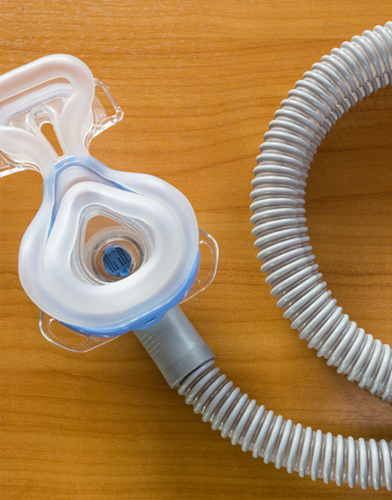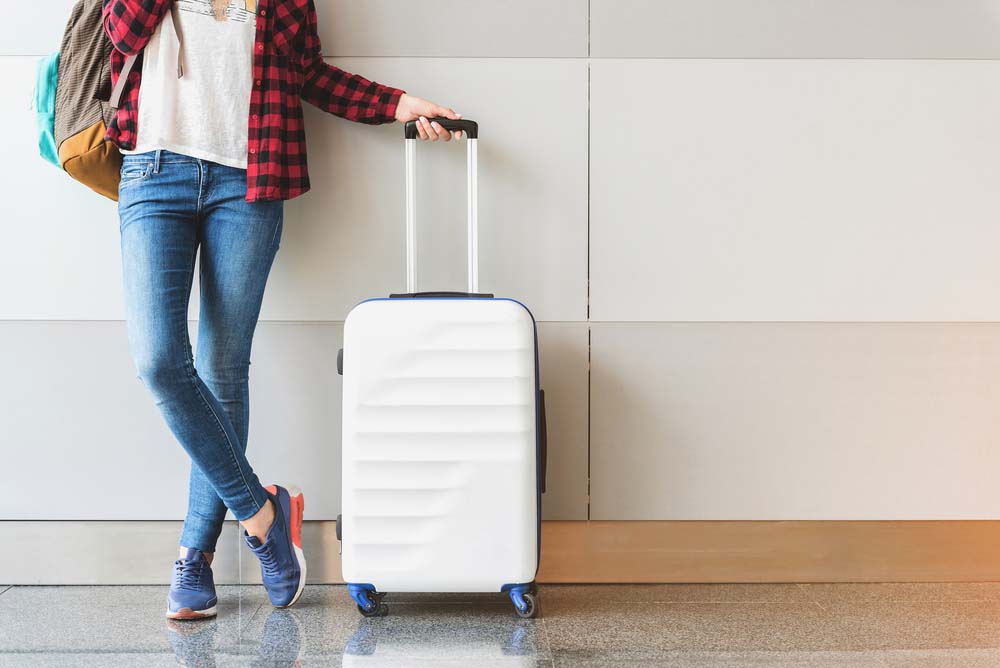Whether you are going to be traveling for the holidays, for work or just to…

Preventing Skin Irritation with CPAP Cleaning Tips

We all appreciate the importance of a good night’s sleep. As leaders in the field of home sleep apnea testing and treatment, we realize that sleep is harder to attain for some people. We are committed to helping everyone achieve their best night’s sleep on a regular basis.
CPAP machines are becoming increasingly popular as more people use them to improve their quality of sleep. It is important for individuals to properly clean their machines for two main reasons: One, it helps to prevent the growth of bacteria and mold in CPAP equipment which can be unsightly and dangerous, making users more prone to sickness. Two, proper cleaning of the machine keeps it in better condition to ensure proper fit and to reduce unnecessary deterioration of parts. We recommend following a few simple steps to keep your CPAP machine in prime condition.
Daily Cleaning
Daily cleaning should include wiping down the mask and emptying the humidifier. The mask should be cleaned using a soft towel with warm water and a mild dish detergent. Avoid harsh soaps and alcohol as these products can irritate the skin and cause breakdown of the plastic. Gently wipe the mask clean and rinse with a clean towel. This removes skin cells, facial oils and sweat from the mask. After cleaning, allow the unit to air-dry. Specially designed towelettes are available for cleaning CPAP masks. These are used to wipe down the mask in the same fashion and are ideal for quick and easy use. Washing the mask in the morning is recommended so that it will be clean, dry and ready for use in the evening.
If the unit has a humidifier, that should also receive daily attention. Empty any remaining water from the unit and gently wash the water tub with warm water and mild detergent. Allow it to air dry and refill with fresh, distilled water right before use.
Weekly Cleaning and Disinfecting
 On a weekly basis, it is important to complete a more thorough cleaning. The mask, tubing and headgear should be submerged in a sink full of warm water and a few drops of mild detergent. Gently swirl the pieces for approximately five minutes, then rinse and air-dry. Non-disposable filters should be treated in a similar way and washed weekly. The disposable filters do not need to be washed; simply replace them as needed. To disinfect the parts of your CPAP machine, mix a solution of one part white vinegar to four parts water. Soak your mask, tubing, headgear and humidifier tub in the solution for 30-45 minutes. Rinse the pieces well, then allow them to air-dry. There are also disinfectant solutions that can be purchased. Use them according to label directions. The disinfecting process should be completed every 1-2 weeks. The CPAP unit itself should be unplugged, then wiped clean with a damp towel. Make sure everything is dry before reassembling the machine.
On a weekly basis, it is important to complete a more thorough cleaning. The mask, tubing and headgear should be submerged in a sink full of warm water and a few drops of mild detergent. Gently swirl the pieces for approximately five minutes, then rinse and air-dry. Non-disposable filters should be treated in a similar way and washed weekly. The disposable filters do not need to be washed; simply replace them as needed. To disinfect the parts of your CPAP machine, mix a solution of one part white vinegar to four parts water. Soak your mask, tubing, headgear and humidifier tub in the solution for 30-45 minutes. Rinse the pieces well, then allow them to air-dry. There are also disinfectant solutions that can be purchased. Use them according to label directions. The disinfecting process should be completed every 1-2 weeks. The CPAP unit itself should be unplugged, then wiped clean with a damp towel. Make sure everything is dry before reassembling the machine.
When to Replace Parts
Spending a few minutes every day to maintain your CPAP machine will help to keep it in good condition. However, even with proper care, the machine and its parts will eventually need to be replaced. While cleaning, we suggest taking a few minutes to inspect the pieces for signs of wear. The mask generally should be replaced approximately every three months. If the mask loses its spring, the cushion feels slippery after cleaning or the treatment seems less helpful than usual, then it is probably time to replace the mask. Headgear should be replaced when it is no longer comfortable due to loss of elasticity—typically every six months. Disposable filters, nasal filters and nasal pillows should be replaced most often when they become dirty, approximately two times per month. Replace the tubing every three months for optimal conditions. The PAP therapy unit typically last about 5-7 years.
We think it is wise to buy a backup once the unit is a few years old. Then the new unit will be ready to go when the old one goes out. For devices with a humidifier, the humidifier should be regularly inspected for discoloration, cracks, pitting or cloudiness. These are signs of deterioration usually caused by the minerals in tap water. To help prevent this problem, we recommend using only distilled water in the humidifier unit. These units should be replaced approximately every six months.
A Little Time Now Saves Money Later
Taking the time to properly care for CPAP machines and equipment will prevent unnecessary replacement costs due to parts wearing out more quickly than normal. More importantly, proper cleaning will ensure your machine will continue functioning efficiently to help you achieve the best sleep possible. We are passionate about our role as a trusted provider of CPAP equipment and want to make sure that everyone has the resources they need to properly care for these devices. Please contact one of our sleep specialists or more information about the care of your sleep therapy device or information on when to replace your equipment parts.



